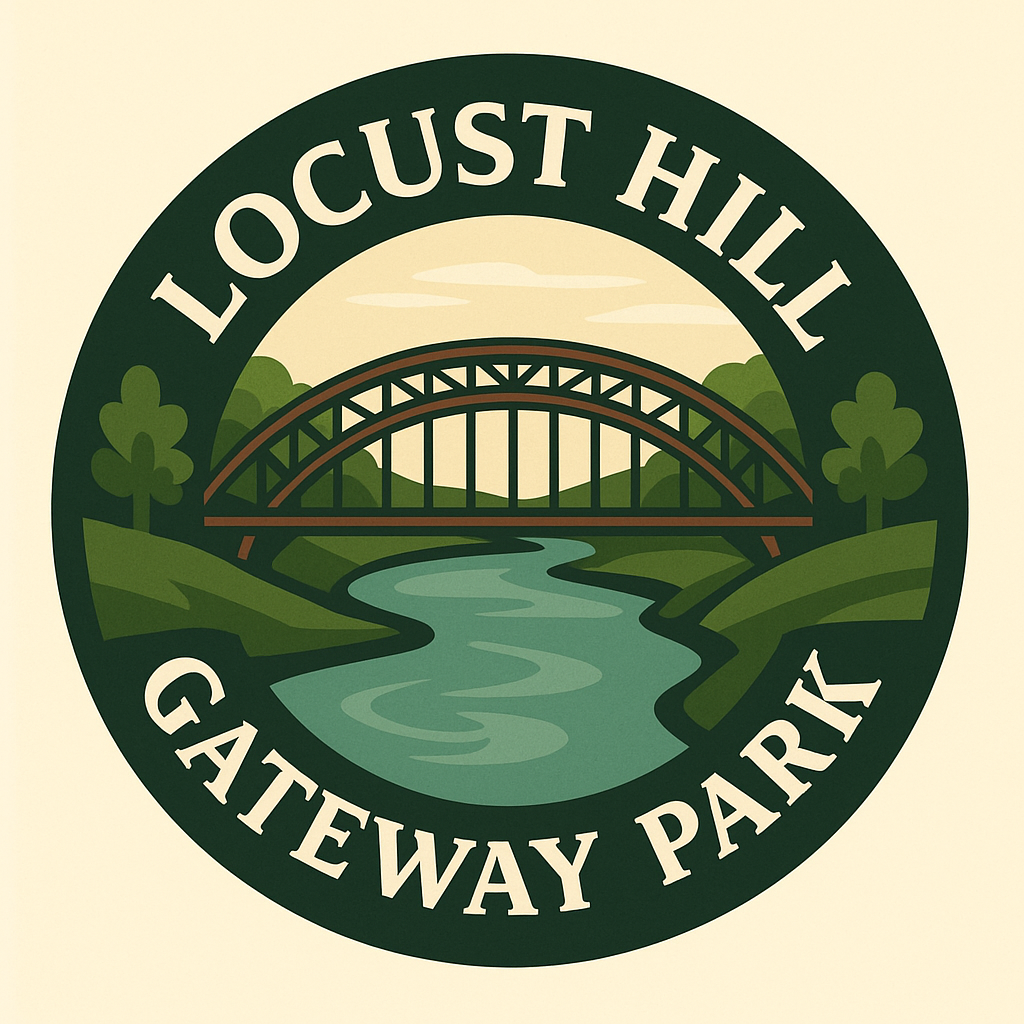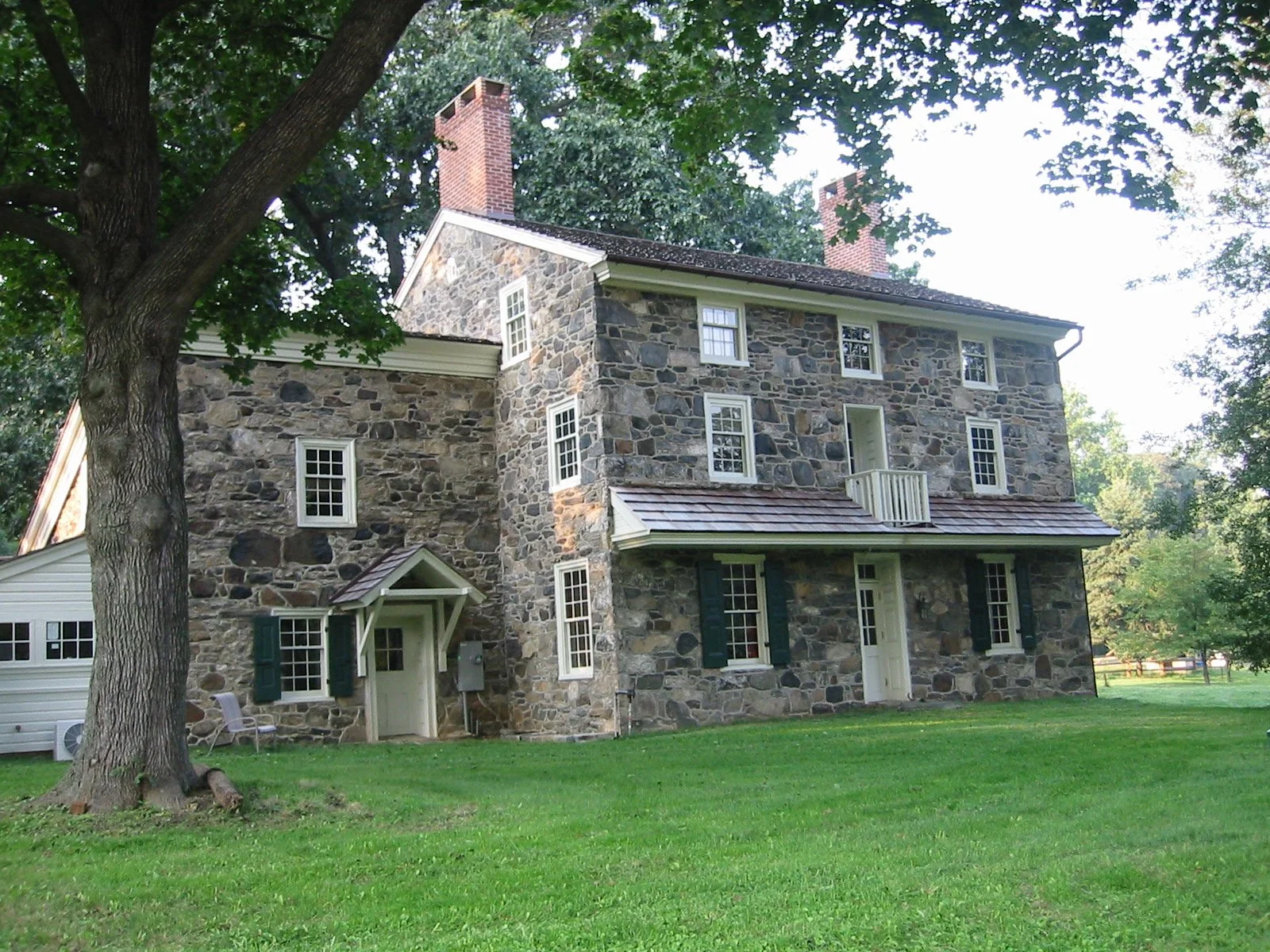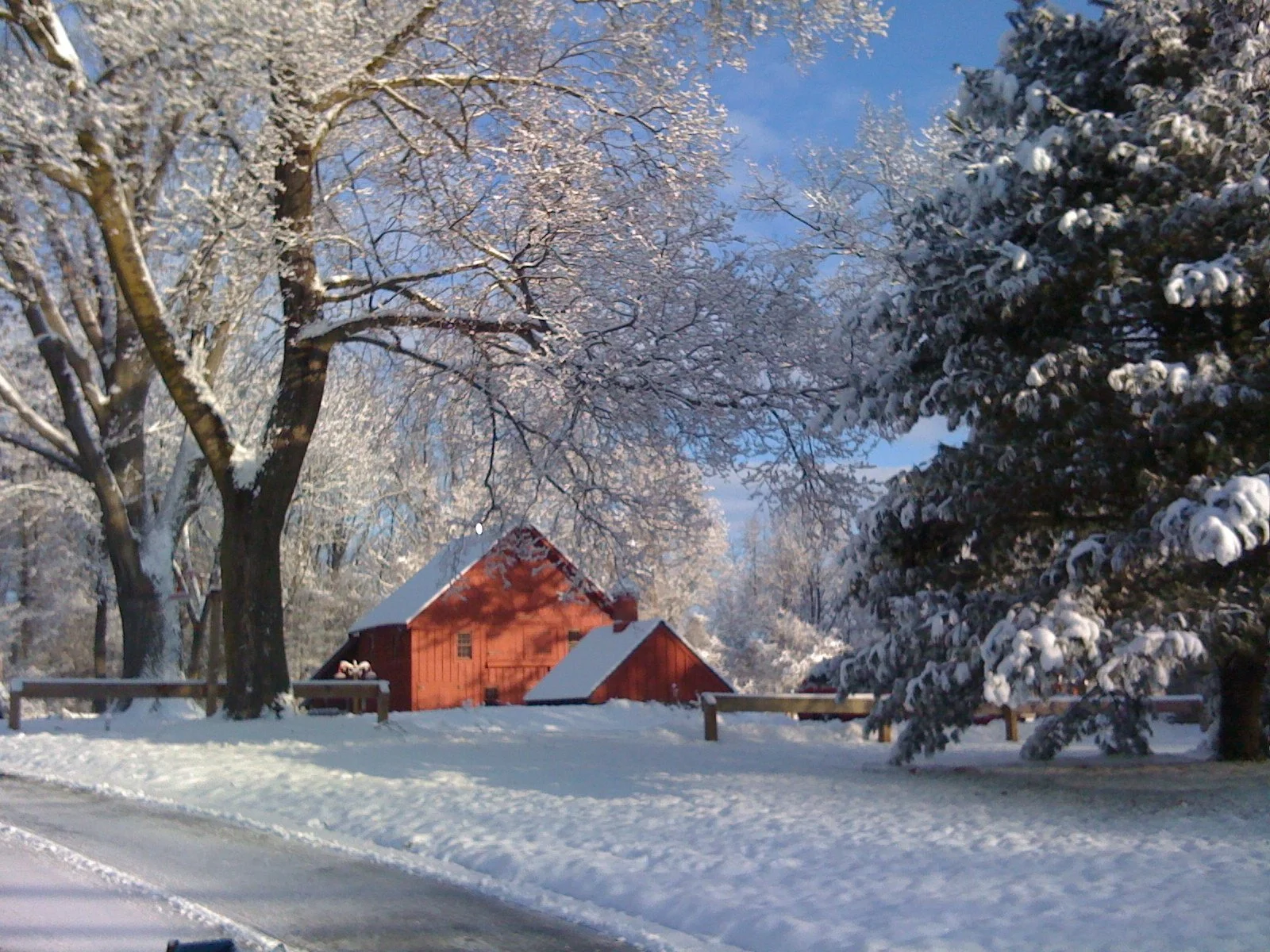The Old Red Barn at Locust Hill
What Happened to the Old Red Barn in Wawa? Community members may recall seeing an old red barn near the road as they passed through Wawa on the Baltimore Pike. It was located adjacent to a 17th-century stone house opposite Wawa, Inc. headquarters. The barn dated back to the 1850’s. It was part of Thatcher’s Farm. The Thatcher family purchased the land in 1786 and was an extensive landowner for over 100 years. The family’s initial source of income was a tilt mill on the Chester Creek. A tilt mill is essentially a water driven trip hammer used for making plows and other iron tools. When the family bought the land, there were already two stone houses on the property. One, at the top of the hill, dated from the 1600s. It was expanded on three occasions.
The second stone house was built into the hill halfway down to Grubbs Bridge (the colonial name for where the road crosses the creek). Today, it is known as Forge Hill. In addition, the family built a smaller stone house right along the road for their son. You can still see the two smaller houses behind the stone wall as you drive along Baltimore Pike. They dug a mill race to power the mill, which crossed Jesse Darlington’s land. According to the agreement, the Thatchers paid the Darlingtons one barley corn per year in rent on a 999-year lease. The mill and much of the mill race were washed away in the floods of 1843.
After the mill was destroyed, the Thatchers continued to farm and manufacture small tools at their farm between Chester Creek and the main road. In those days, roads often took on the name of their destination. We are all familiar with the Baltimore Pike, which goes to Baltimore. In the 18th century, it was locally called the Road to Logtown, only a mile to the west. Facing east, it was called the Road to Black Horse. Logtown was a valuable source of timber for the British. Black Horse, also known as Wrangle Town, had a notorious tavern.
The old red barn was critical to the Thatchers’ operations. It had space for hay, cows, horses, a carriage, tackle, and an upstairs living space for help. According to legend, a former slave lived there for many years and helped with farm work. In an 1890 prospectus for the sale of the property, the farm was described as having two wells, 15 acres in cultivation, an orchard, and some of the best soil in southeastern Pennsylvania.
Within view of the main house was the Wawa train station, where three rail lines came together. The junction even had a turntable to turn engines around to go back to Philadelphia. According to the prospectus, 19 trains left daily for the 39-minute trip from Wawa to Philadelphia.
Over the 340 years for which we have records, many families besides the Thatchers owned the property. In the surviving deeds and documents, familiar names pop up on the list of people who either owned all or parts of the property. The most noteworthy include William Penn, Caleb Pusey, Thomas Brassey, John Pennel, John Sharpless, John Newlin, Anna Cheyney, Joseph Thatcher, George Drayton, Edward Potts, Episcopal Church Hospital, and the Hamiltons. I remember Donald and Ruth Hamilton from my childhood. They did much to restore the property. He was a lawyer who served as a justice of the peace. His courtroom was in the old stone house by the barn, right next to the road. They so loved the property that they asked for their ashes to be spread in the woods behind the barn.
The wooded hillside from the barn down to the creek is unique. Nature has left giant boulders cascading down parts of the slope. Geologic forces caused the Chester Creek to make a hairpin turn that you can see on the map. At the bottom of the slope, the old West Chester line of the Pennsylvania Railroad crosses the creek and the remains of Thatcher’s mill race.
The house and land at Thatcher’s farm had been subdivided long ago. My wife, JoAnn, and I bought the land from Phyllis and Steve Dougherty in 2001, shortly before the World Trade Center attack in New York City. On the first day of our ownership, we woke up to find a crew of orange-coated FBI agents with dogs combing the wooded hillside. It turned out they were following leads on a murder investigation from the 1970s. Days later, when the 9/11 attack occurred, the FBI left the site since they had more pressing issues to address.
In 2004, we bought the house from Ralph and Celeste Johnson. We restored the house to its original colonial style, turning usable space into offices. At the same time, we kept goats, ducks, chickens, and turkeys in the barn. About ten years ago, we began to think how we could upgrade the barn to be more useful. Our plans for redesign were dashed when one engineer informed us that he could not tell what was holding up the leaning barn except memory. Powderpost beetles had gotten the better of it.
In 2020, just before the COVID pandemic, we tore down the old barn and started construction on a new barn, shipped from Nebraska by Sand Creek Post and Beam (now Timberlyne Group). The building arrived on December 7th on seven tractor trailers. Victor Burgos and Sons were the general contractors; Erin Cochran of Revealing Redesign provided design expertise; the Amish crew of Jake Immergut completed the framing, siding, and roof; John McClenahan of McClenahan Painting gave the barn its beautiful hue of moss green and Kevin Meyers of Brooksmeyer Landscaping provided grading and hardscape construction. It was a thrilling scene to see the first posts and beams go up.
The barn was completed in two years. Farm animals are no longer the main residents. The barn has a wood shop, full kitchen, two garage spaces, a 40’ x 30’ great room, and a habitable loft. The space was not designed for rental or commercial use but rather as an all-weather activity space for seniors, children, and grandchildren. In the three months after completion, we had Thanksgiving dinner, Christmas dinner, a 75th birthday party, and numerous small get-togethers.
In the long view, it is sad to lose a historic building like the red barn, but it is more important to keep this old farm viable as a compelling rural site along one of the region’s busiest highways. In keeping with this we are making plans to establish a public park with trails which will extend from the Baltimore Pike all the way down to the creek and the Darlington trail head. The park will eventually unite Chester Heights open space with Middletown open space and the Natural Lands Trust, more on this later. JBT



